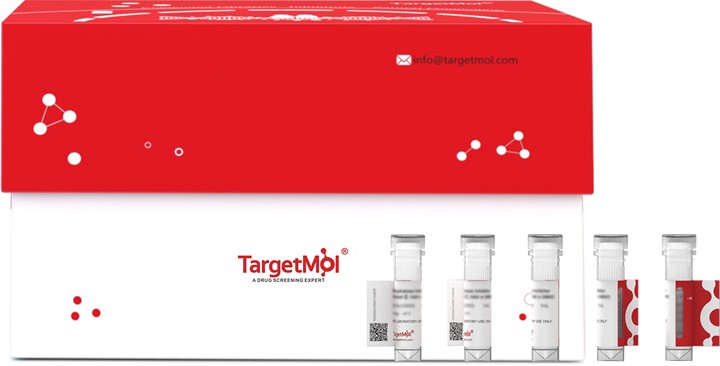Shopping Cart
Remove All Your shopping cart is currently empty
Your shopping cart is currently empty
The inhibition of kallikrein 5 (KLK5) has been identified as a potential strategy for treatment of the genetic skin disorder Netherton syndrome, in which loss-of-function mutations in the SPINK5 gene lead to down-regulation of the endogenous inhibitor LEKTI-1 and profound skin-barrier defects with severe allergic manifestations. To aid in the development of a medicine for this target, an X-ray crystallographic system was developed to facilitate fragment-guided chemistry and knowledge-based drug-discovery approaches.

| Pack Size | Price | USA Warehouse | Global Warehouse | Quantity |
|---|---|---|---|---|
| 5 μg | $51 | 7-10 days | 7-10 days | |
| 10 μg | $80 | 7-10 days | 7-10 days | |
| 20 μg | $129 | 7-10 days | 7-10 days | |
| 50 μg | $248 | 7-10 days | 7-10 days | |
| 100 μg | $418 | - | In Stock | |
| 200 μg | $757 | 7-10 days | 7-10 days | |
| 500 μg | $1,670 | 7-10 days | 7-10 days |
| Biological Activity | Activity has not been tested. It is theoretically active, but we cannot guarantee it. If you require protein activity, we recommend choosing the eukaryotic expression version first. |
| Description | The inhibition of kallikrein 5 (KLK5) has been identified as a potential strategy for treatment of the genetic skin disorder Netherton syndrome, in which loss-of-function mutations in the SPINK5 gene lead to down-regulation of the endogenous inhibitor LEKTI-1 and profound skin-barrier defects with severe allergic manifestations. To aid in the development of a medicine for this target, an X-ray crystallographic system was developed to facilitate fragment-guided chemistry and knowledge-based drug-discovery approaches. |
| Species | Mouse |
| Expression System | HEK293 Cells |
| Tag | C-His |
| Accession Number | Q9D140 |
| Synonyms | SCTE,Klnc,KLK-L2,KLKL2,KLK5,Kallikrein c |
| Construction | Gly30-Asn293 |
| Protein Purity | > 95% as determined by Tris-Bis PAGE; > 95% as determined by HPLC |
| Molecular Weight | 29.9 kDa (predicted). Due to glycosylation, the protein migrates to 40-50 kDa based on Tris-Bis PAGE result. |
| Endotoxin | < 1 EU/μg by the LAL method. |
| Formulation | Lyophilized from a solution filtered through a 0.22 μm filter, containing 20 mM NaAc, 150 mM NaCl (pH 5.0). Typically, 8% trehalose is incorporated as a protective agent before lyophilization. |
| Reconstitution | Reconstitute the lyophilized protein in 20mM NaAc, 150mM NaCl (pH 5.0). The product concentration should not be less than 100 μg/ml. Before opening, centrifuge the tube to collect powder at the bottom. After adding the reconstitution buffer, avoid vortexing or pipetting for mixing. |
| Stability & Storage | It is recommended to store recombinant proteins at -20°C to -80°C for future use. Lyophilized powders can be stably stored for over 12 months, while liquid products can be stored for 6-12 months at -80°C. For reconstituted protein solutions, the solution can be stored at -20°C to -80°C for at least 3 months. Please avoid multiple freeze-thaw cycles and store products in aliquots. |
| Shipping | In general, Lyophilized powders are shipping with blue ice. |
| Research Background | The inhibition of kallikrein 5 (KLK5) has been identified as a potential strategy for treatment of the genetic skin disorder Netherton syndrome, in which loss-of-function mutations in the SPINK5 gene lead to down-regulation of the endogenous inhibitor LEKTI-1 and profound skin-barrier defects with severe allergic manifestations. To aid in the development of a medicine for this target, an X-ray crystallographic system was developed to facilitate fragment-guided chemistry and knowledge-based drug-discovery approaches. |
| Size | Quantity | Unit Price | Amount | Operation |
|---|

Copyright © 2015-2025 TargetMol Chemicals Inc. All Rights Reserved.